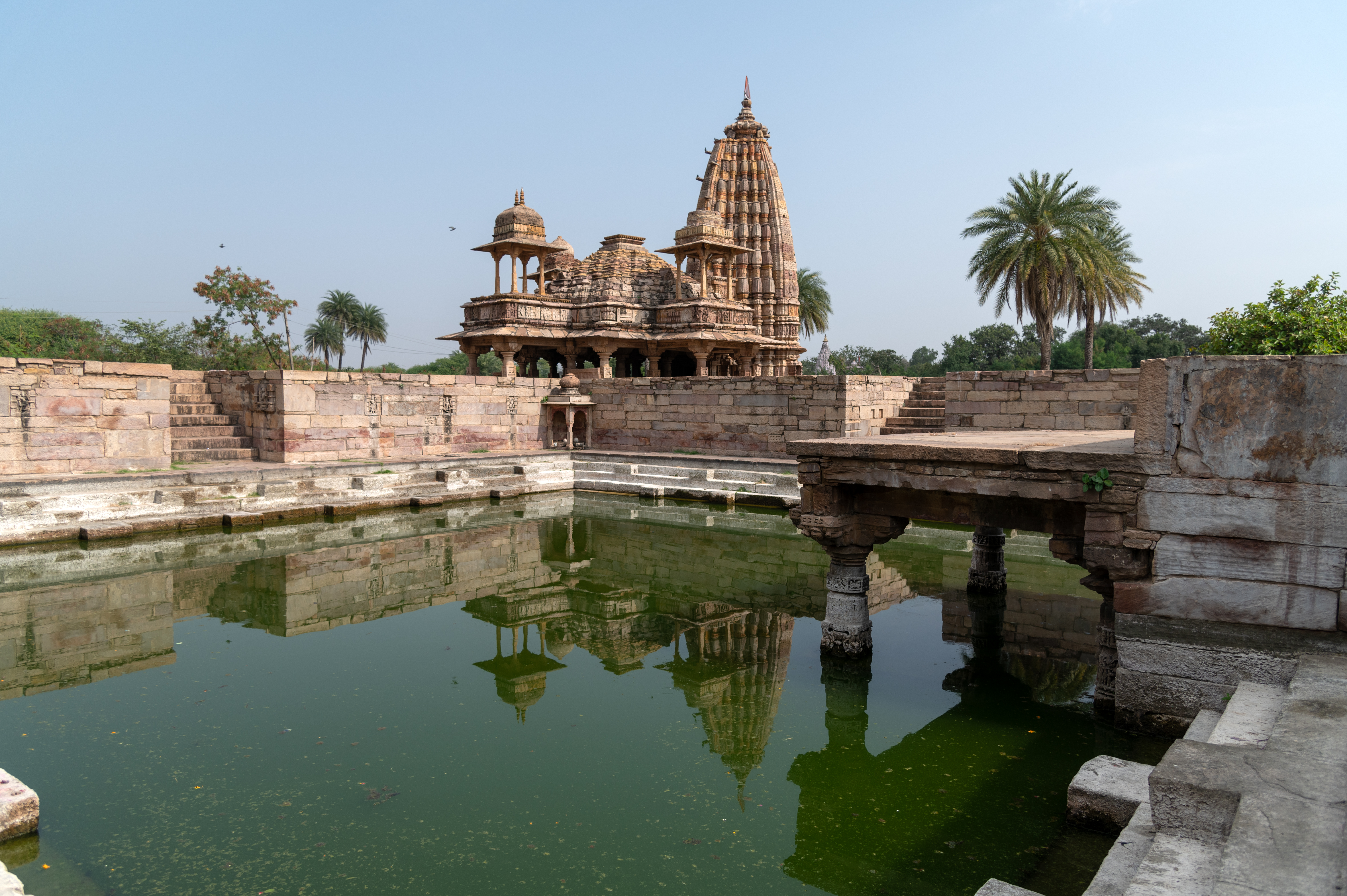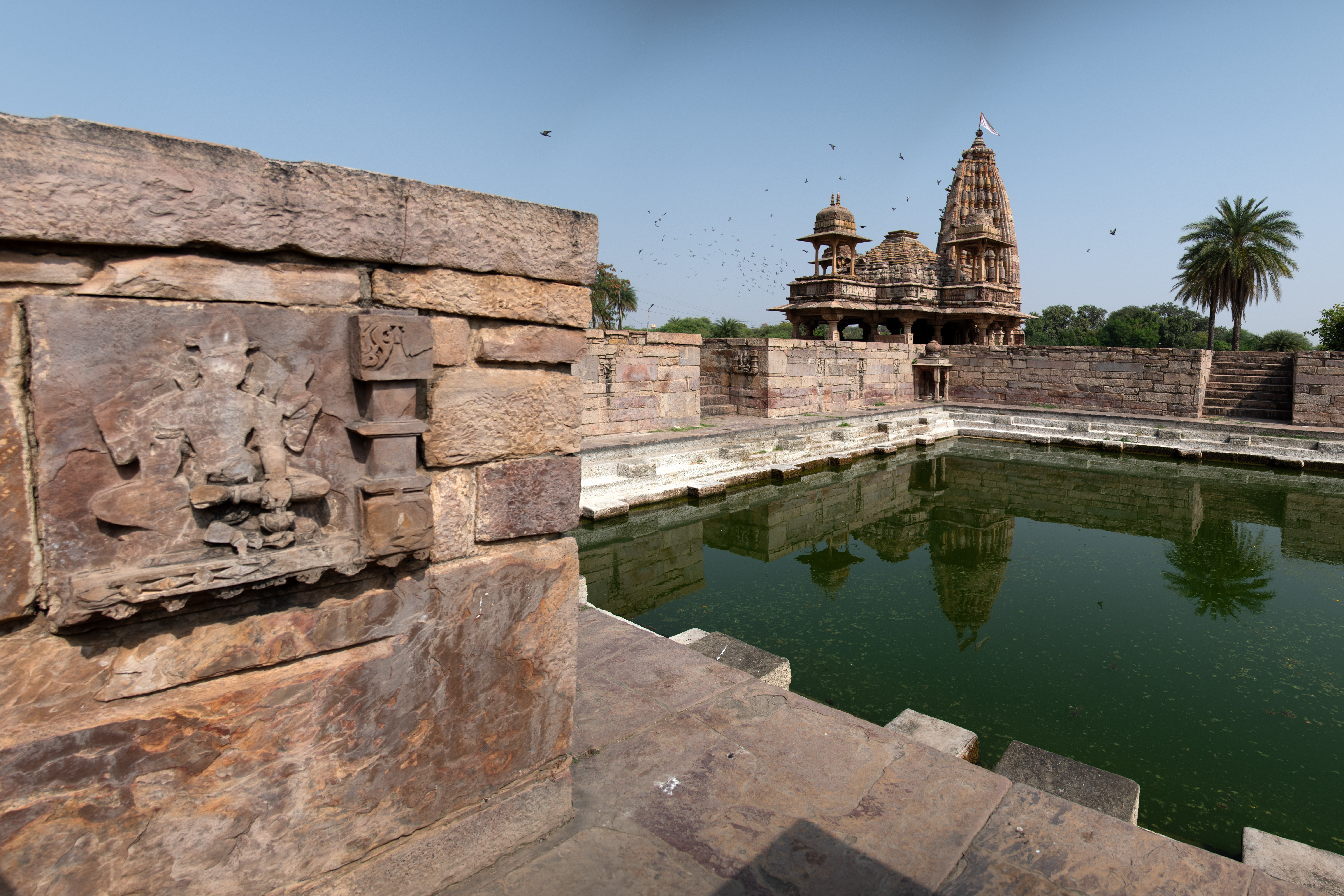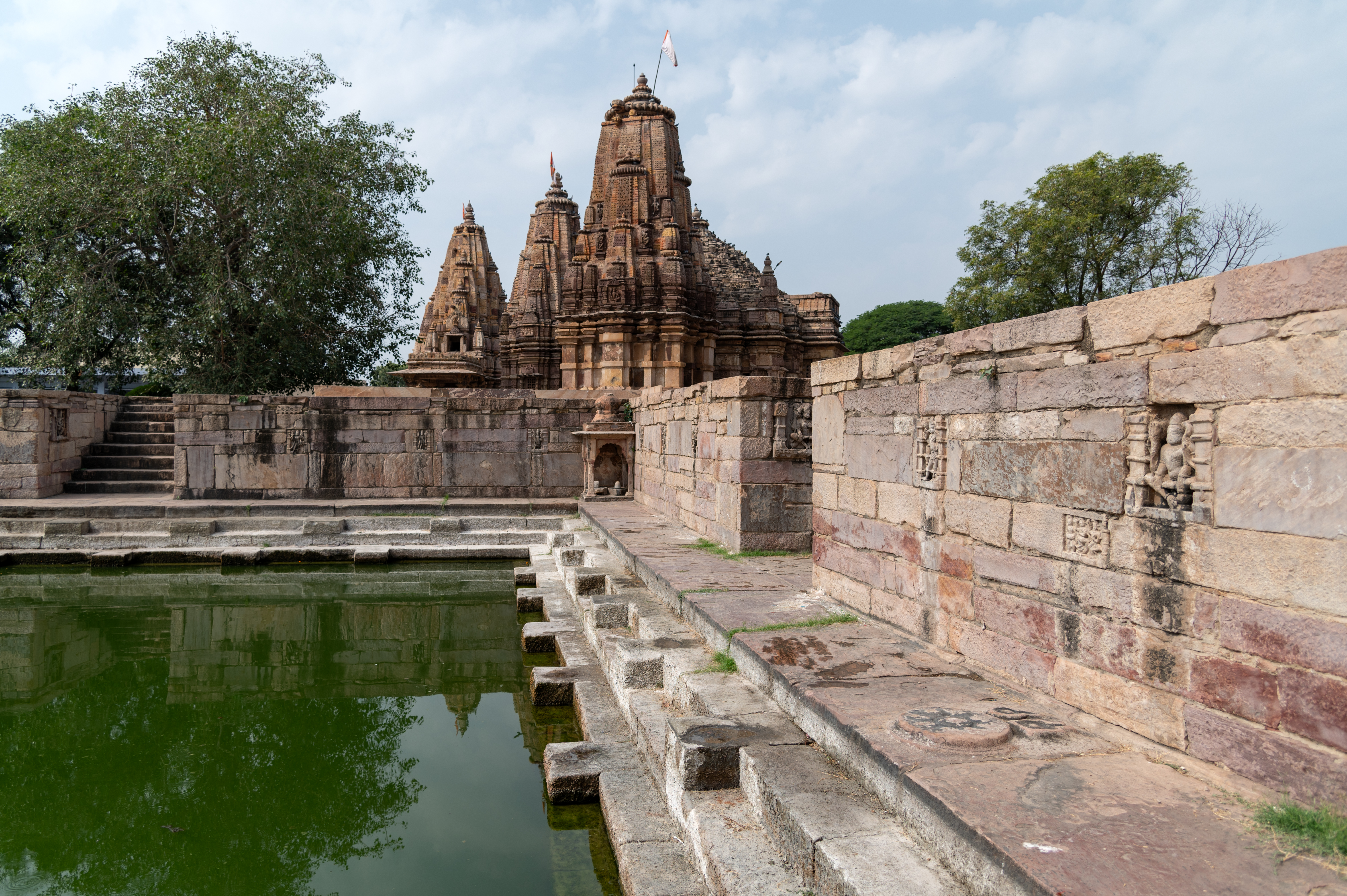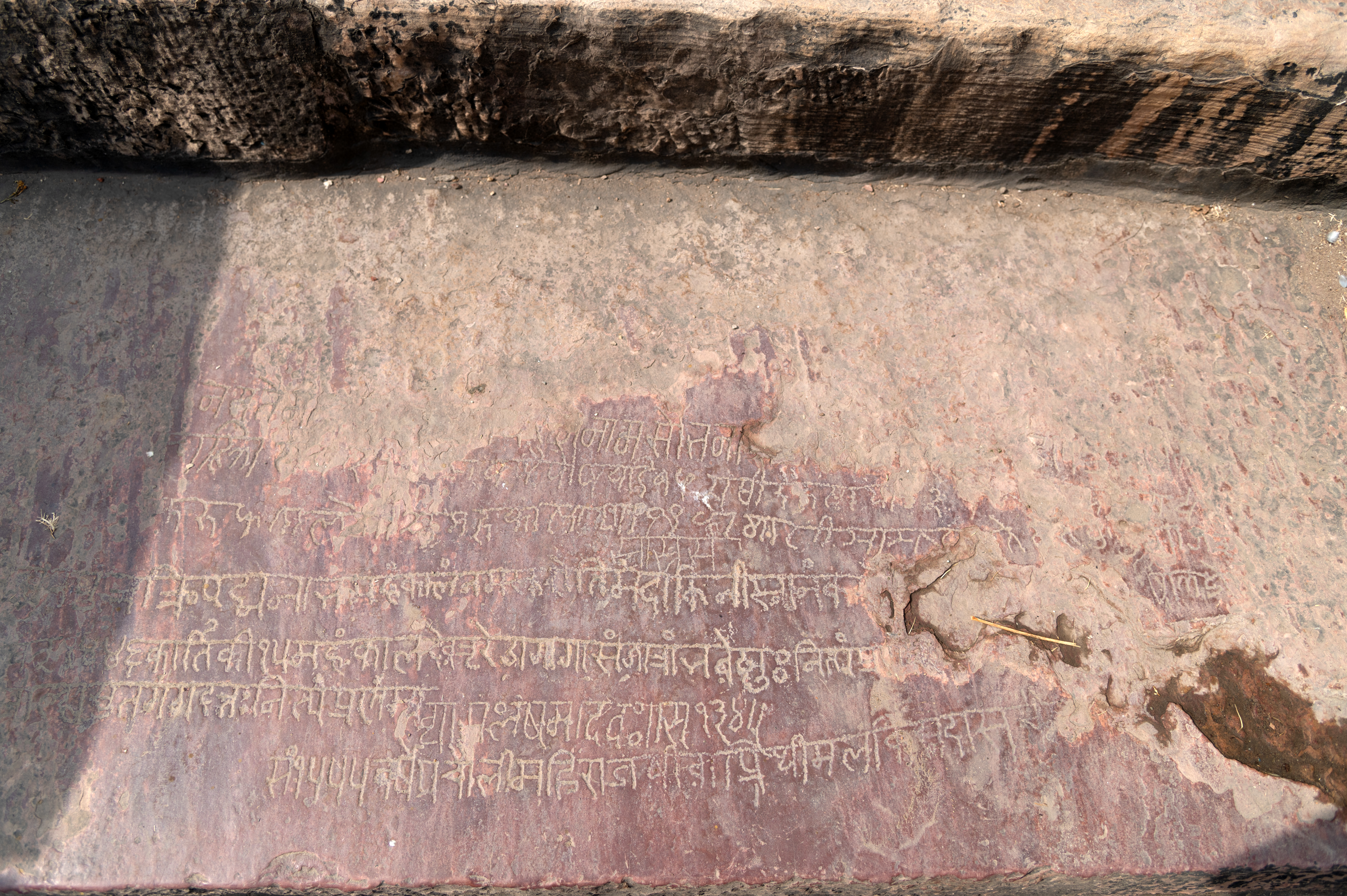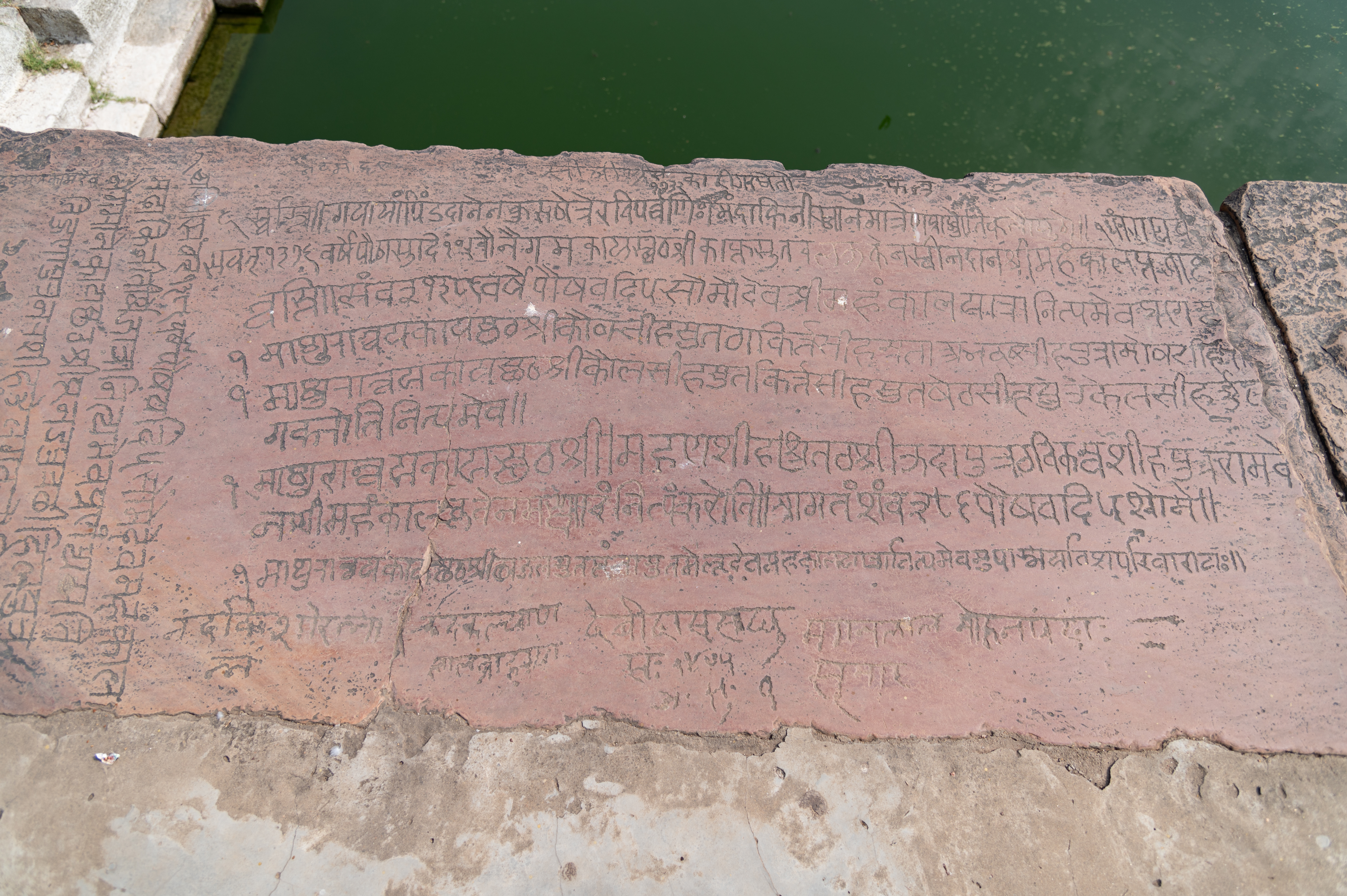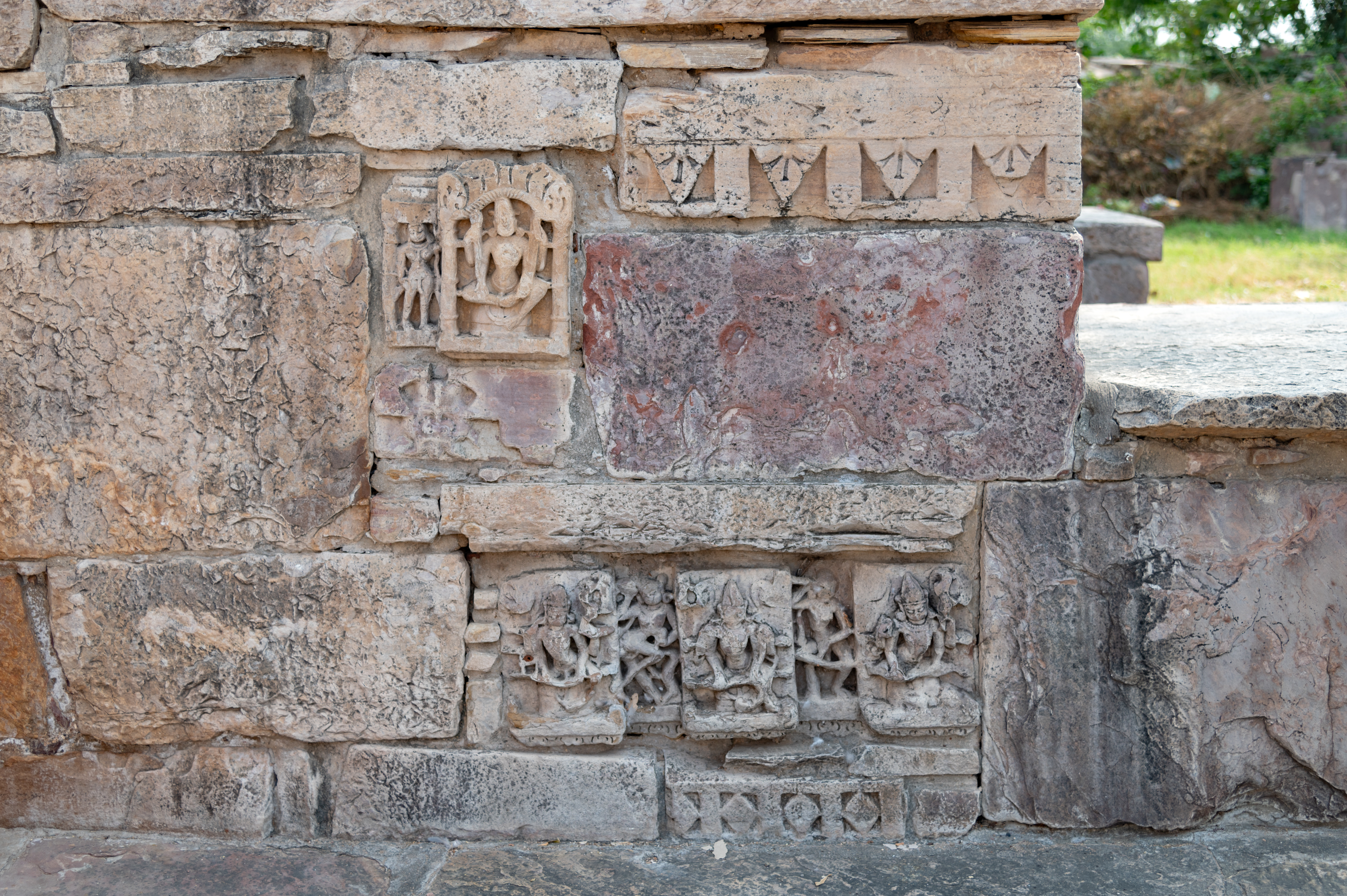Capturing the Essence of Mandakini Kund in the Bijolia Temple Complex
Mandakini Kund (Image 1) is situated within the Bijolia group of temples located in the Bhilwara district of Rajasthan. Also known as the Bijolia Mahakal temple complex, it is renowned for its historic structures like the Mahakal Temple, Hazareshwar Temple and Undeshwar Temple. The complex ground also features a serene kund (water tank) behind the Mahakal Temple and preceding the Undeshwar Temple. The Mandakini Kund and the three temples in the complex are protected monuments under the Jaipur Circle of the Archaeological Survey of India (ASI). While extensive research has focused on the art and architecture of the three temples, the Kund has received less scholarly attention.
Ancient texts on temple construction recommend building temples near forests, water sources, or mountains, as gods are believed to be integral to nature, more so water. Hence, many renowned temples are built near water bodies or are comprised of water structures, where worshippers purify themselves through a ceremonial bath before worship. A pilgrimage is considered incomplete without this ritual. The Mandakini Kund serves as a holy water reservoir within the Bijolia temple complex, where followers regularly take ritual baths. Historical inscriptions at the Mandakini Kund indicate its popularity during the medieval era, highlighting that bathing in the Kund is an age-old tradition.
Away from the city, the kund, surrounded by the three temples, offers a tranquil retreat. The calm water of the kund, the expansive sky, birds in flight, and the towering temple shikharas (superstructure) create a peaceful setting for devotees. (Image 2) The origin and reason behind the name ‘Mandakini’ for the kund remains unknown. Nevertheless, it is possible that the kund is revered similarly to the sacred Mandakini River, which flows from the mountain summit.
The Kund is surrounded by a tall enclosure wall, concealing its inner structure and water. As one proceeds from the Mahakal Temple towards the Undeshwar Temple, a set of steps adorned with intricate sculptures comes into view. (Image 3) These steps capture the devotee’s attention, and only upon climbing them does kund’s hidden beauty become fully apparent.
The Mandakini Kund is a square-shaped water reservoir with entrances on three sides. (Image 4) Steps on each side allow individuals to descend and immerse themselves in the water. On the fourth side, there is a flat-roofed structure supported by pillars. (Image 4) The lower part of this structure is submerged, so only the adorned upper portion of the pillars and the bharavahaka (load bearers) brackets supporting the roof are visible. The interior surface of the enclosure walls, like the entrances, features several sculptures. (Image 5) These are not integral components of the original structure; rather, they are fragments or remnants from the temples. Among these sculptures are depictions of deities like Brahma, Vishnu, and Mahesha, dikapalas (deities of cardinal directions), surasundaris (celestial damsels) and vyalas (composite mythical creatures). These sculptures are positioned intermittently, lacking a discernible order in their placement, suggesting they were not originally intended to embellish the kund.
There are also two small pavilions at the corners of the kund. These pavilions are supported by four pillars ending in cusped arches (Image 6), a design feature from the Mughal era under the emperor Shah Jahan’s rule. These arches provide support for the chajja (eave), crowned by a small cupola with intricately detailed lotus motifs.
The Bijolia temple complex is devoted to Shaivism, evident not only in the Shiva lingas (aniconic representation of Shiva) that are present in the sanctums of all three temples but also in the sculptural programming of these temples. Shiva lingas are also situated in the corner pavilions of the kund. Additionally, there are carvings of lingas on the stairs of the kund (Image 7), indicating that the site was frequented by many Shaiva devotees over time. This suggests that the kund served not only as a place for ritual bathing and cleansing but also as a significant location for offering prayers.
On the steps of the Mandakini Kund, several inscriptions are found in varying states of preservation. These inscriptions are written in Devnagari script and Sanskrit language. (Image 8) A detailed examination of these inscriptions reveals significant information, such as the temple’s name, Mahakal. The inscription also mentions the name of the kund Mandakini, providing the date of the devotee’s visit and their community affiliation. (Image 9) The inscriptions note that worshippers visited the Mahakal Temple and bathed in the Mandakini Kund. Dating between the 13th and the 15th centuries CE, these inscriptions specifically highlight members of the Kayastha-Mathur community. (Images 8 and 9) According to RV Somani, the author of Temples of Rajasthan, Mandakini Kund retained its popularity in the medieval era. People from diverse communities, including the Mathur-Kayastha community, frequented this site. [1] It is noteworthy that the inscriptions from the 13th-15th centuries CE consistently refer to the kund as Mandakini, indicating that the name has remained unchanged since then. This suggests that the Mahakal Temple and the Mandakini Kund held significant importance among devotees. However, presently, the kund’s popularity has diminished.
In addition to the notable inscriptions, the kund also features intriguing sculptures, including representations of Brahma (Image 10), Mahesha (Image 11), and various Vishnu figures. (Image 12) These sculptures depict the deities as four-armed, standing, adorned in their distinctive attire, and holding their respective symbols. Apart from gods, sculptures of goddesses include Brahmani (Image 13) and Chamunda (Image 14). Brahmani and Chamunda are included in the matrikas (mother goddesses), essential to the Shaiva pantheon. Given the temples' dedication to Shiva in Bijolia, these sculptures likely belonged to the temples and were later added to their current location.
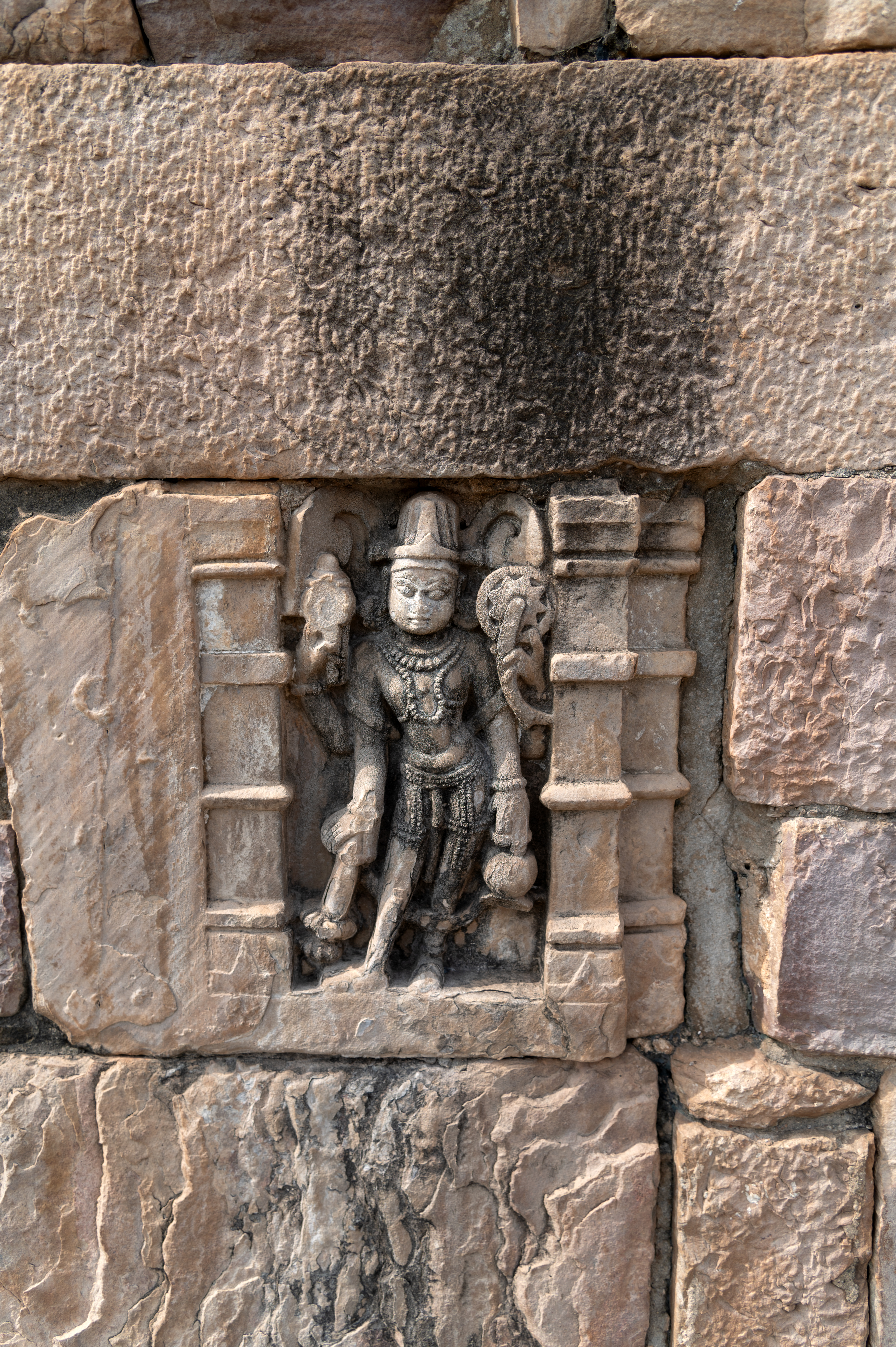
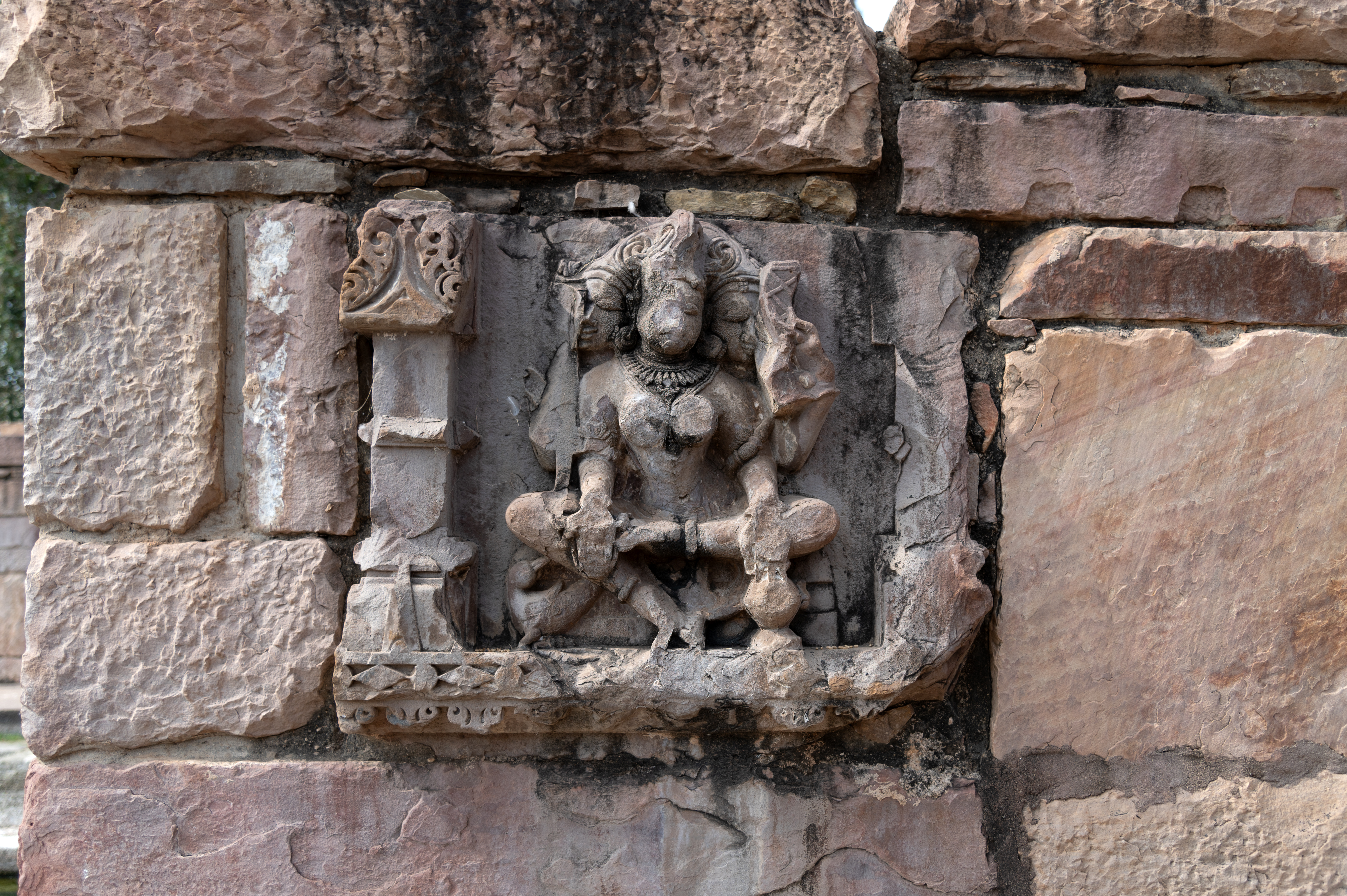

The Mandakini Kund reveals significant inscriptions and artwork that are often overlooked. Their closer examination reveals the kund’s medieval popularity from the 13th to 15th centuries CE. Diverse communities, including the Kayastha Mathuras, visited the Mandakini Kund, leaving engraved records of their visits.
The artwork on the enclosure wall suggests that it was added later and was not originally part of the kund. These sculptures feature Matrikas such as Brahmani, Chamunda, the Trinity of Brahma, Vishnu, and Mahesha, dikapalas such as Kubera (Image 15), surasundaris, chauri (fly whisk) bearers, dancers, musicians, and vyalas overpowering elephants. These figures commonly adorn Shiva temples, indicating a connection. The varying sizes and stylistic differences in these sculptures further suggest they were not originally part of the kund. (Image 16)

Footnotes:
[1] Somani, Temples of Rajasthan, 113.
Bibliography:
Archaeological Survey of India, Jaipur Circle. Bijolia Group of Temples. Archaeological Survey of India. n.d. https://asijaipurcircle.nic.in/Bijolia%20%20mahakal%20&%20other%20temples.html
Joshi, J. P., and Krishna Deva. Inventory of Monuments and Sites of National Importance. Volume II, Part I, Jaipur Circle. New Delhi: Archaeological Survey of India: 2006. https://ignca.gov.in/Asi_data/88329.pdf
Somani, R.V. Temples of Rajasthan. Jaipur: Publication Scheme, 2012.
